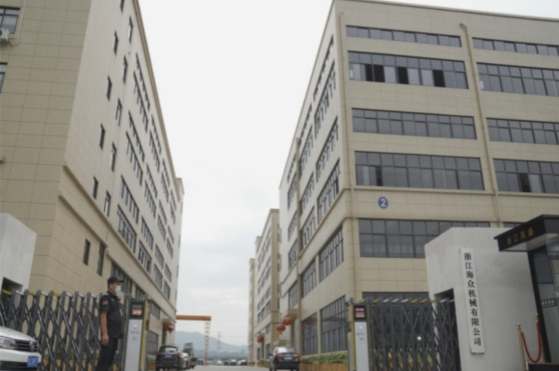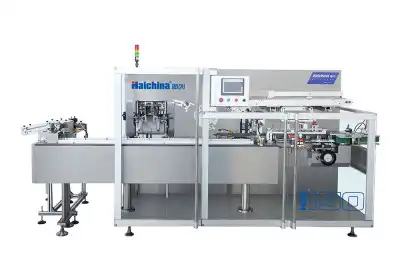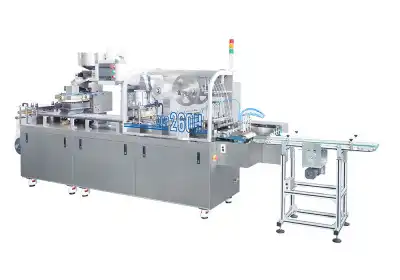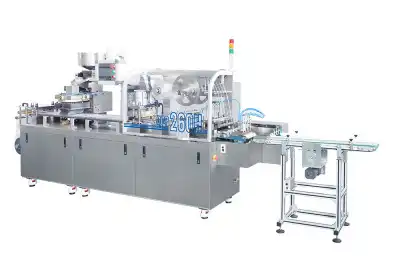Sustainable Solutions: Eco-Friendly Blister Packaging
Biodegradable Materials Revolution
Sustainability efforts have driven a revolution in blister packaging materials, focusing on biodegradable alternatives to traditional plastics. Manufacturers are increasingly adopting materials like polylactic acid (PLA), derived from renewable resources such as corn starch or sugarcane. These eco-friendly materials provide comparable protective qualities to conventional plastics while significantly lowering environmental impact. To keep up, blister packaging machines are being modified and optimized to accommodate these new biodegradable materials, ensuring smooth production without sacrificing efficiency or product protection.

Recycled Content Integration
Incorporating recycled content into blister packaging is another growing sustainability trend. Thanks to advancements in sorting and cleaning technologies, post-consumer recycled (PCR) plastics can now be used safely and effectively in blister packs. This circular approach reduces plastic waste and supports environmental responsibility, resonating with eco-conscious consumers. Equipment manufacturers are responding by designing blister packaging machines capable of processing recycled materials reliably, helping pharmaceutical companies meet sustainability goals without compromising quality or safety standards.

Minimalist Design Approach
The future of blister packaging also embraces minimalist design principles focused on reducing material usage while maintaining product protection. By using less plastic and foil, manufacturers can decrease waste generation and production costs. Modern blister packaging machines are equipped with precision tooling and advanced control systems that enable the manufacture of thinner yet durable blister packs. This streamlined packaging design aligns with sustainability objectives and market demand for environmentally friendly solutions, offering both economic and ecological benefits.

Smart Packaging: The Integration of Technology
IoT-Enabled Blister Packs
The Internet of Things (IoT) is making its way into blister packaging, offering unprecedented levels of interaction and information. Smart blister packs equipped with NFC (Near Field Communication) tags or QR codes can provide consumers with detailed product information, usage instructions, and even authentication measures. This technology also enables real-time tracking of products throughout the supply chain, enhancing inventory management and reducing counterfeiting risks.
Temperature-Sensitive Indicators
For temperature-sensitive products, particularly in the pharmaceutical industry, blister packs are being developed with integrated temperature indicators. These visual cues alert consumers or healthcare providers if a product has been exposed to temperatures outside the safe range, ensuring product efficacy and patient safety. Blister packaging machines are evolving to incorporate these advanced features seamlessly into the production process.
Interactive Packaging Experiences
Augmented Reality (AR) is set to transform the consumer interaction with blister packaging. By scanning the package with a smartphone, users can access 3D product visualizations, detailed usage tutorials, or even entertaining branded content. This technology not only enhances the user experience but also provides valuable data to manufacturers about consumer engagement. The integration of these features requires sophisticated printing and QR code application capabilities in modern packaging equipment.
Enhanced Product Protection: Advanced Barrier Technologies
Nano-Coatings for Superior Barrier Properties
The future of blister packaging is increasingly focused on advanced barrier technologies that safeguard sensitive products from environmental threats like moisture, oxygen, and light. Nano-coatings represent a groundbreaking advancement, providing superior barrier properties without sacrificing package clarity. These ultra-thin, uniform coatings are applied using specialized equipment integrated into modern blister packaging machines, ensuring consistent coverage. This technology enhances the longevity and efficacy of pharmaceutical products while maintaining consumer appeal through transparent, high-quality packaging.
Active Packaging Solutions
Active packaging is rapidly gaining traction in the blister packaging industry by incorporating functional components within the packaging materials. These active elements - such as oxygen scavengers, moisture absorbers, and antimicrobial agents - interact dynamically with the product or its surroundings to preserve quality and extend shelf life. To accommodate these complex materials, blister packaging machines are evolving with enhanced capabilities that ensure seamless integration without compromising seal integrity. This innovation offers pharmaceutical companies new ways to maintain product efficacy and reduce waste.
Child-Resistant and Senior-Friendly Designs
With increasing regulatory demands, blister packaging designs are evolving to meet the dual needs of child safety and senior accessibility. Innovative packaging solutions now include child-resistant features requiring specific opening techniques, while also ensuring ease of use for elderly patients. These designs often incorporate multi-layer constructions or specialized mechanisms that require precision tooling and advanced blister packaging machinery. Balancing security and accessibility, such features improve patient compliance and product safety, reflecting the industry’s commitment to consumer protection and regulatory adherence.
Conclusion
The future of blister packaging is bright, marked by innovative solutions that address sustainability, smart technology integration, and enhanced product protection. As the industry continues to evolve, we can anticipate more groundbreaking developments that will reshape how products are packaged and presented to consumers. From eco-friendly materials to IoT-enabled packages and advanced barrier technologies, the blister packaging machine of tomorrow promises to be more efficient, interactive, and environmentally responsible than ever before.
Contact Us
Interested in learning more about our cutting-edge blister packaging solutions? Contact Zhejiang Haizhong Machinery Co.,Ltd. at [email protected] to discover how we can help you stay ahead of these exciting trends and innovations in packaging technology.





